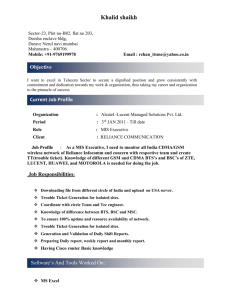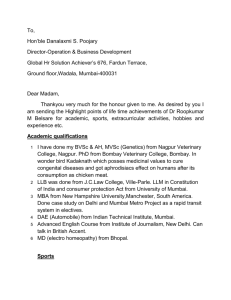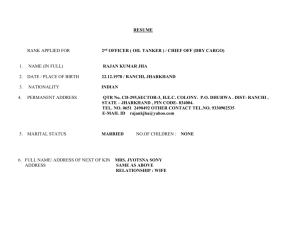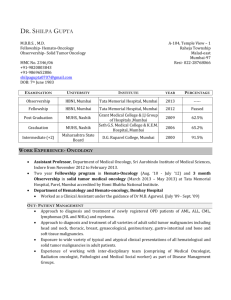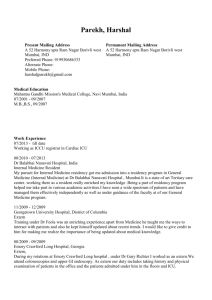Mumbai Urban Transport Infrastructure Project and Mumbai Urban
advertisement
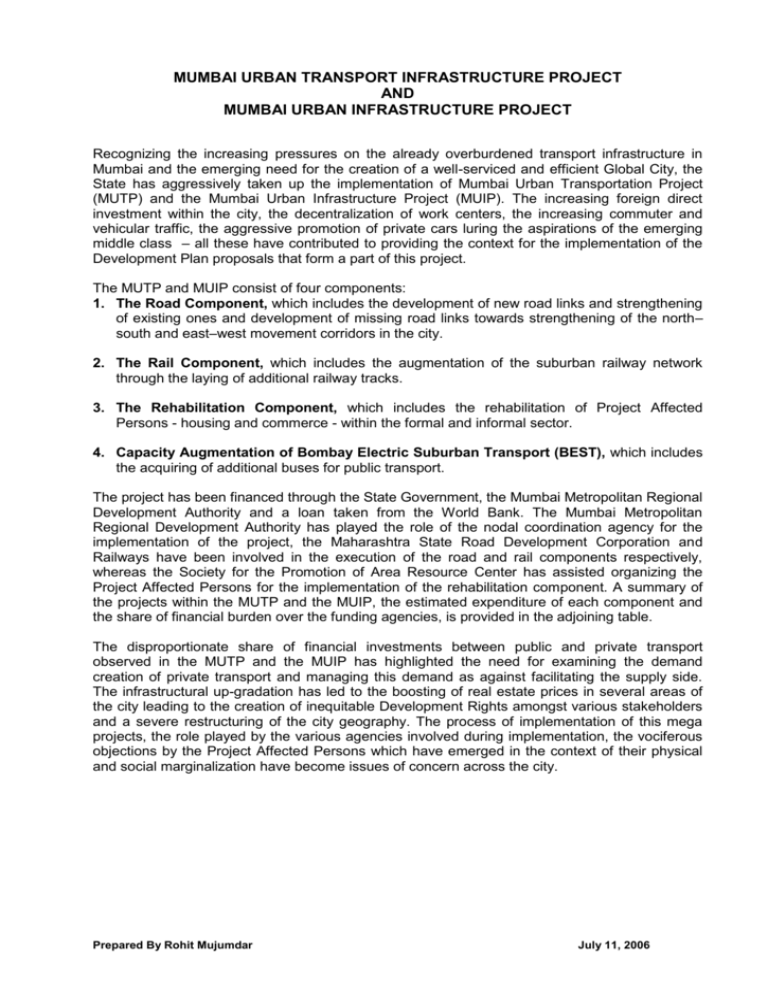
MUMBAI URBAN TRANSPORT INFRASTRUCTURE PROJECT AND MUMBAI URBAN INFRASTRUCTURE PROJECT Recognizing the increasing pressures on the already overburdened transport infrastructure in Mumbai and the emerging need for the creation of a well-serviced and efficient Global City, the State has aggressively taken up the implementation of Mumbai Urban Transportation Project (MUTP) and the Mumbai Urban Infrastructure Project (MUIP). The increasing foreign direct investment within the city, the decentralization of work centers, the increasing commuter and vehicular traffic, the aggressive promotion of private cars luring the aspirations of the emerging middle class – all these have contributed to providing the context for the implementation of the Development Plan proposals that form a part of this project. The MUTP and MUIP consist of four components: 1. The Road Component, which includes the development of new road links and strengthening of existing ones and development of missing road links towards strengthening of the north– south and east–west movement corridors in the city. 2. The Rail Component, which includes the augmentation of the suburban railway network through the laying of additional railway tracks. 3. The Rehabilitation Component, which includes the rehabilitation of Project Affected Persons - housing and commerce - within the formal and informal sector. 4. Capacity Augmentation of Bombay Electric Suburban Transport (BEST), which includes the acquiring of additional buses for public transport. The project has been financed through the State Government, the Mumbai Metropolitan Regional Development Authority and a loan taken from the World Bank. The Mumbai Metropolitan Regional Development Authority has played the role of the nodal coordination agency for the implementation of the project, the Maharashtra State Road Development Corporation and Railways have been involved in the execution of the road and rail components respectively, whereas the Society for the Promotion of Area Resource Center has assisted organizing the Project Affected Persons for the implementation of the rehabilitation component. A summary of the projects within the MUTP and the MUIP, the estimated expenditure of each component and the share of financial burden over the funding agencies, is provided in the adjoining table. The disproportionate share of financial investments between public and private transport observed in the MUTP and the MUIP has highlighted the need for examining the demand creation of private transport and managing this demand as against facilitating the supply side. The infrastructural up-gradation has led to the boosting of real estate prices in several areas of the city leading to the creation of inequitable Development Rights amongst various stakeholders and a severe restructuring of the city geography. The process of implementation of this mega projects, the role played by the various agencies involved during implementation, the vociferous objections by the Project Affected Persons which have emerged in the context of their physical and social marginalization have become issues of concern across the city. Prepared By Rohit Mujumdar July 11, 2006



